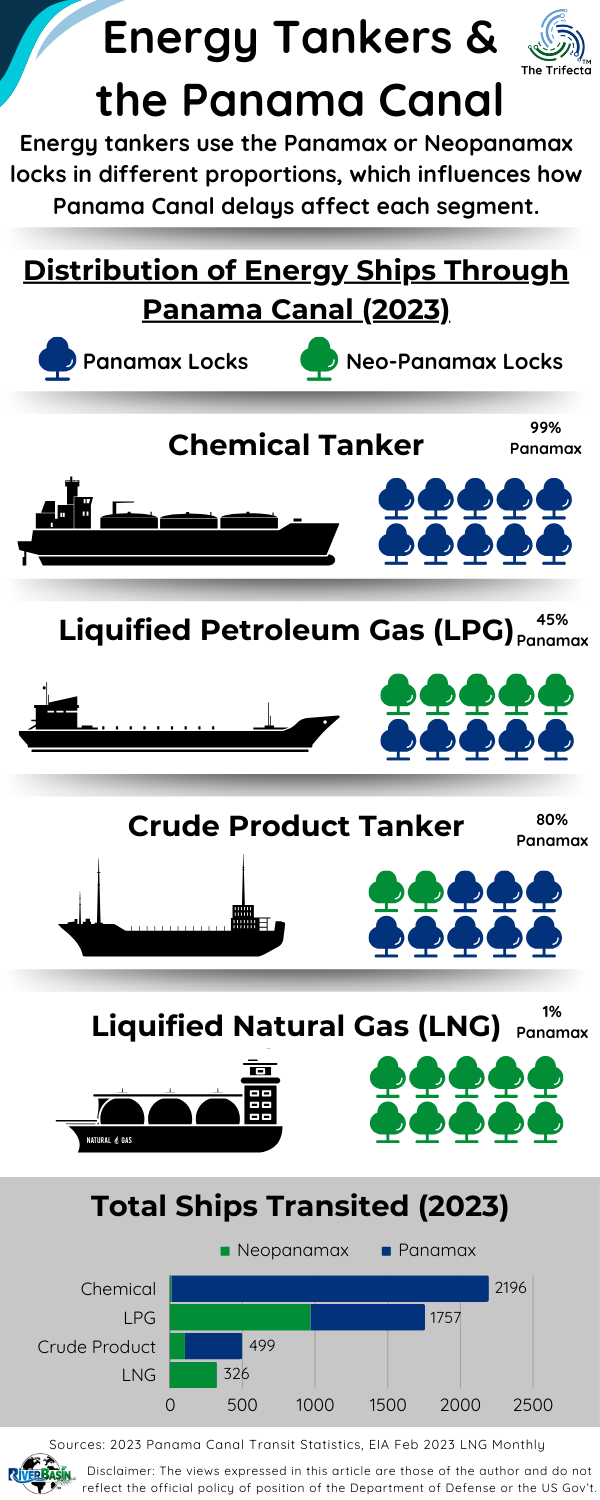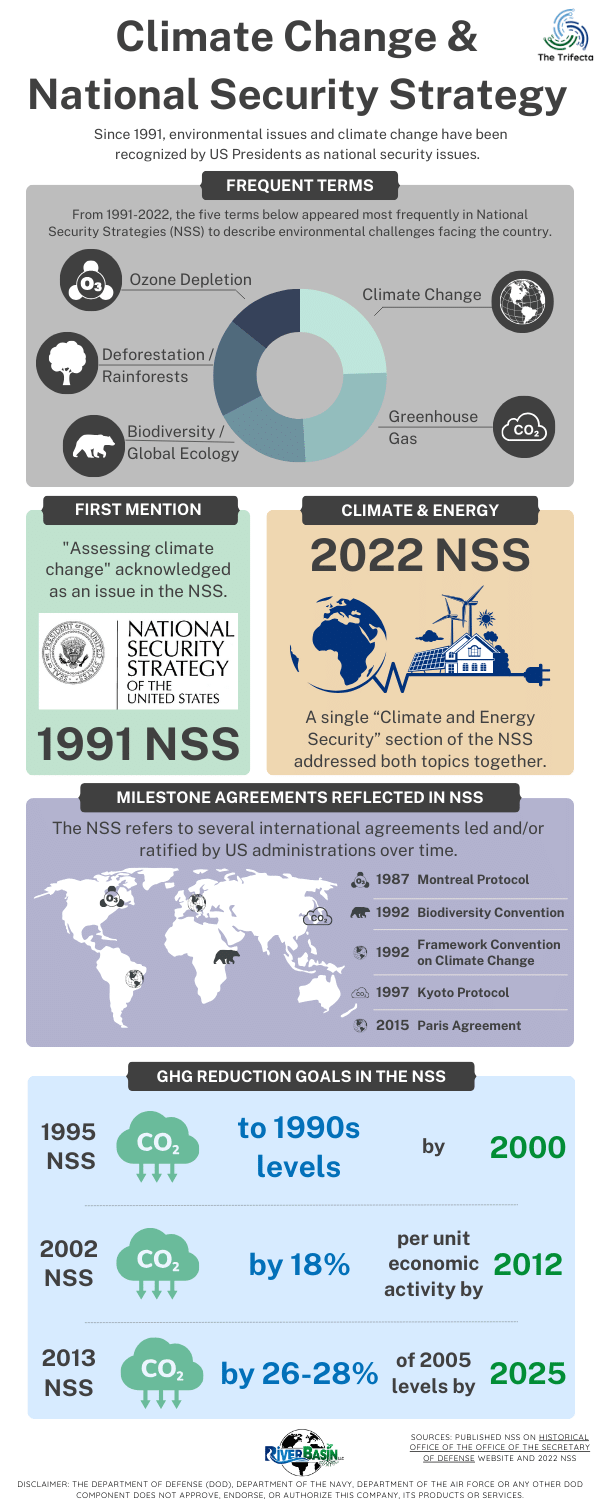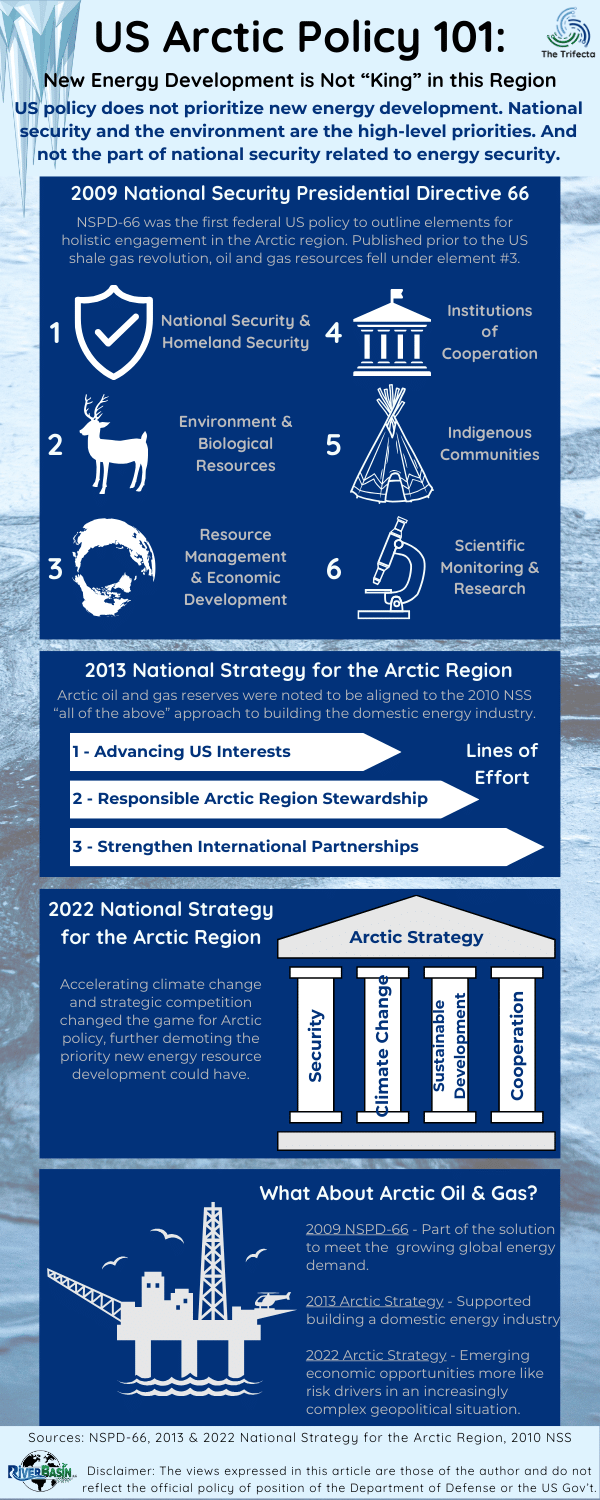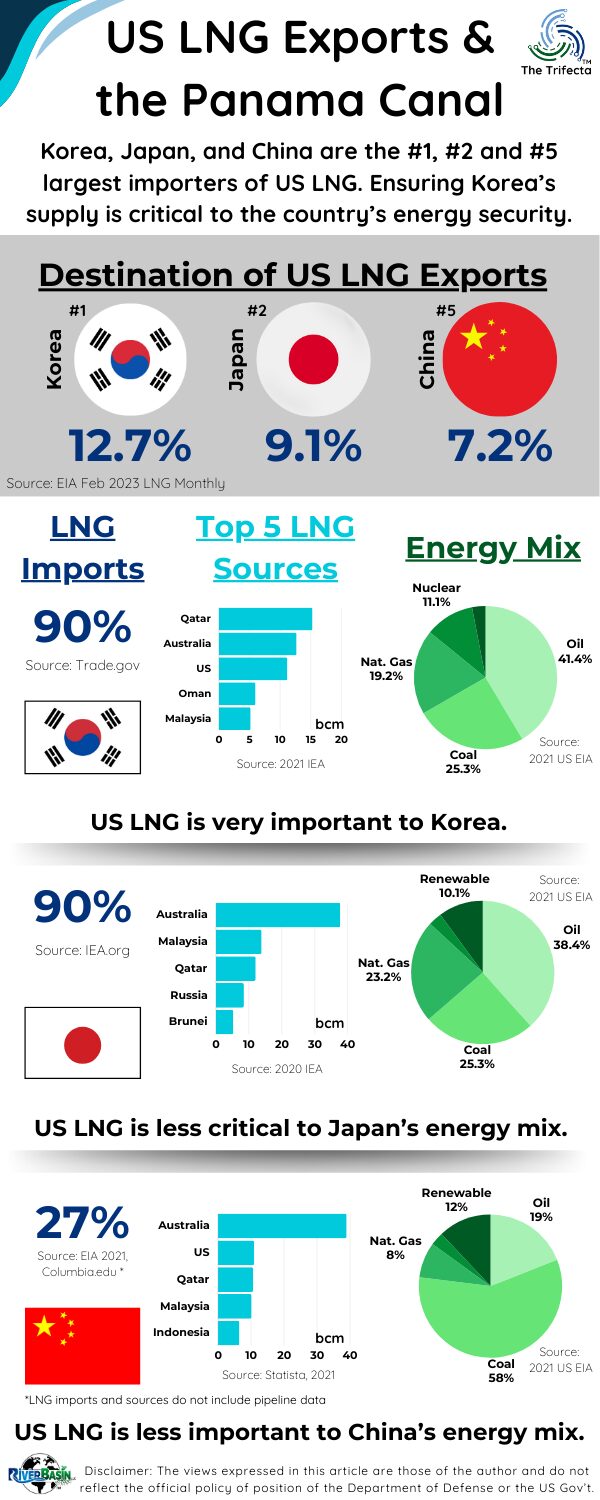
BLUF
A coalition of countries must cooperate to enforce international law and protect at-risk global shipping. Examples already exist to do this, which may be leveraged if needed in a contested South China Sea or an ice-free Arctic. Members and observers of the Arctic Council and Barents Euro-Arctic Council include nearly 20 countries with experience supporting operations to maintain freedom of the seas.
Why does this matter?
The global economy depends on the uninterrupted flow of shipping. Businesses expect freedom of navigation, but it is not assured. As the PRC and Russia continue to challenge the rules-based international order, additional coalitions may be needed to maintain freedom of the seas.
Key Take-Aways
- The 15+ year counter-piracy effort is the best modern example of a broad coalition formed to protect global shipping.
- A contested South China Sea or ice-free Arctic are two areas ripe for future coalitions to support international law and protect global shipping.
- Over 25 countries have experience supporting coalition operations to protect global shipping.
Disclaimers: The views expressed in this article are those of the author and do not reflect the official policy or position of the Department of Defense or the U.S. Government. The appearance of external hyperlinks does not constitute endorsement by the United States Department of Defense (DoD) of the linked websites. The DoD does not exercise any editorial, security or other control over the information you may find at these locations.
The 15+ year counter-piracy effort is the best modern example of a broad coalition formed to protect global shipping.
In November 2007, the International Maritime Organization (IMO) passed Resolution A.1002(25). It reminded countries of “the strategic importance of the navigational routes along the coast of Somalia for regional and global seaborne trade and the need to ensure that they remain safe at all times.”
IMO beseeched governments to help uphold international law. The international law in question was the UN Convention on the Law of the Sea (UNCLOS).
Article 100 of UNCLOS says, “All States shall cooperate to the fullest possible extent in the repression of piracy on the high seas or in any other place outside the jurisdiction of any state.”
Article 101 of UNCLOS defines piracy as “any illegal acts of violence or detention, or any act of depredation, committed for private ends.”
Between June and December 2008, the UN passed four Security Council Resolutions (1816, 1838, 1846, 1851) regarding the piracy issue. UNSCR 1851 called “upon States, regional and international organizations to take part in the fight against piracy and armed robbery at sea off the coast of Somalia”.
The European Union (EU) and the North Atlantic Treaty Organization (NATO) led two of the most significant counter-piracy coalition operations to protect global shipping.
In 2008, the European Union (EU) Naval Force stood up Operation Atalanta, and it continues today. EU Resolution 2008/851/CFSP established the military operation. Its focus remains counter-piracy, while also providing general maritime security in the north-west Indian Ocean.
NATO stood up Operation Ocean Shield between August 2009 and December 2016 as another counter-piracy coalition. Multiple coalitions were needed because of the vast area requiring coverage.
The HOA counter-piracy area of operations was over 2 million square miles or approximately the size of western Europe. Operations were focused on the Internationally Recommended Transit Corridor (IRTC), which helped narrow the operational area and optimize resources.
US-led CTF-151 also stood up in 2009 to protect global shipping.
The US also led a counter-piracy operation in the region. Combined Task Force 151 (CTF-151) stood up in January 2009 to conduct counter-piracy operations in a specific area around the Horn of Africa. To help visualize the different CTF areas of operation, check out this map graphic.
CTF-151 operated with the EU and NATO efforts. It was also a multi-national coalition. In 2021, CTF-151’s mission still focused on counter-piracy and protection of commerce free flow. As a CTF, the leadership and command of the multinational force rotated among the different member countries. The last four CTF commanders were from the Philippines, South Korea, Brazil, and Pakistan.
Separate from CTF-151, CTF-153 was established in April 2022 to focus on maritime security and partner capacity in the Red Sea. The area of operations includes the Bab el-Mandeb and Gulf of Aden. Establishment of CTF-153 occurred prior to the 2023 Houthi attacks in the Red Sea.
Houthi attacks on global shipping in the Red Sea spurred the most recent example of coalitions protecting global shipping.
US-led Operation Prosperity Guardian formed in December 2023 to protect shipping through the Red Sea. Iranian-backed Yemeni Houthis started attacking maritime vessels believed to be supporting Israel because the Houthis supported Hamas. (These Houthi attacks were unrelated to previous piracy issues.)
According to CNN, the US invited 39 countries to take part in the operation. One notable exception was China, who was not invited. Since the Operation launched, more countries have joined.
A contested South China Sea or ice-free Arctic are two areas ripe for future coalitions to support international law and protect global shipping.
Turning to the future, global shipping through regions other than the Middle East may require protection.
The UN Conference on Trade and Development (UNCTAD) estimates 80% of international trade by volume is carried by the sea. More than half passes through Asia and roughly a one-third transits the South China Sea (SCS). Korea, Japan, and China, among other countries, rely on a continuous flow of goods throughout the area.
Meanwhile, the PRC continues making claims and taking actions in the South China Sea that are inconsistent with UNCLOS. Three examples immediately come to mind. First, the continued dispute with the Philippines over the Sierra Madra. Second, island building in the South China Sea. Third, the 9-Dash line and 2023 expansion to a 10-Dash line (covered in this post). If the PRC exerted more control over shipping through the SCS, an international coalition to enforce UNCLOS would likely be requested.
As the Arctic becomes ice-free, the Transpolar Sea Route would be a potential global shipping option.
Shipping through the Arctic is a different story. The Trifecta previously looked at current Arctic routes but did not address the Transpolar Sea Route that would open in an ice-free future.
The Transpolar Sea Route (TSR) would follow the most direct path across the Arctic Ocean. Ownership and claims of the Arctic area are subject to multiple, conflicting disputes. If we step back to international law, countries bordering the Arctic Ocean can claim an EEZ out to 200 nm, according to Article 82 of UNCLOS. With the 200 nm claim, border countries also agreed to offshore national boundaries. See the Figure below.

Source: Wikimedia Commons/Ahnode, Public domain
Beyond these borders, the area should be international land or water. Visualizing the TSR cutting directly through the Arctic Ocean, it would travel mostly through international waters. However, the Arctic situation is far more complex. In 2019, National Geographic described it as a developing cold war, while CSIS described an “ice curtain.” Harvard International Review highlighted the increasing geopolitical competition in 2020. The Congressional Research Service characterized the geopolitical and military situation in early 2024.
Climate change will continue to drive retreating Arctic ice extent, depth, and longevity. As this happens, the geopolitical situation will increase in complexity, particularly as authoritarian governments keep challenging the rules-based international order. If shipping companies consider leveraging the TSR, conditions may develop to require coalitions to enforce UNCLOS and protect global shipping along the TSR.
Over 25 countries have experience supporting coalition operations to protect global shipping.
The breadth of countries that supported counter-piracy operations reinforces the criticality of global shipping. Further, many countries supported multiple or all coalitions to protect global shipping. For example, NATO’s Operation Ocean Shield was supported by NATO members and non-NATO members. The same applied to EU’s Operation Atalanta.
The infographic above shows which countries are members of each operation. Readers should note the robust and sustained support from over 25 countries. The bottom right box on the infographic includes members and observers for the Arctic Council and the Barents Euro-Arctic Council (BEAC). These countries are all invested in the future of the Arctic Region. As depicted in the graphic, they also have experience supporting coalition operations to protect global shipping.
Note the core group of countries in the center of the Venn diagram: France, Italy, Netherlands, Norway, Spain and the United Kingdom. These 6 countries supported all operations and are engaged with the Arctic Council and BEAC.
Not all participant countries contribute Navy ships or military forces.
Executing multi-national coalition operations is challenging and complex. It requires far more capability than military ships sailing the high seas. Land-based infrastructure, communications, logistics, and staff support are all significant resource requirements to support the operations. At a higher level, demonstrations of national will and effective government mechanisms to engage internationally are also important “muscle movements” to exercise. Regardless of the participation method, all member countries improved their capability to operate in multi-national environments. Their engagement increases the likelihood they can respond to a contested SCS or Arctic issue if needed.
Hopefully, we will not reach a point that coalitions are needed to protect global shipping through the South China Sea or Arctic Ocean. But, as leaders from disparate industries have agreed, “hope is not a strategy.” Instead of hope, extensive support to coalition operations protecting shipping for the last 15+ years should provide some measure of confidence in the international community’s ability to respond. Particularly in an Arctic scenario, all Arctic Council and BEAC members/observers have experience supporting coalition operations to protect global shipping.

Think About It...
- How did your business benefit from Operations Ocean Shield and Atalanta?
- When did piracy around the Horn of Africa start affecting your business? This might be directly or indirectly through insurance rates.
- In 2023-2024, which value chains or customers did Operation Prosperity Guardian protect for your business?
- How resilient is your business to a shipping disruption in the South China Sea?
- Under what conditions would an Arctic shipping route be beneficial for your business?
DOPSR 24-P-0471




